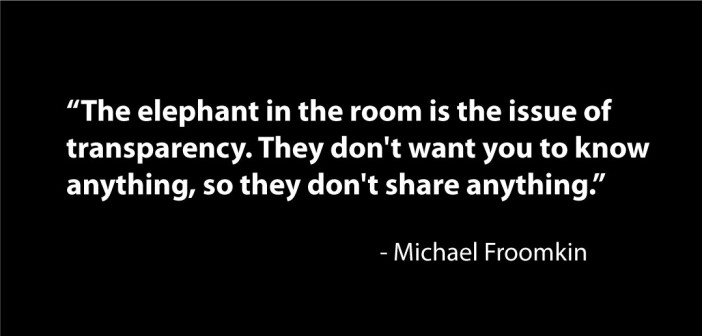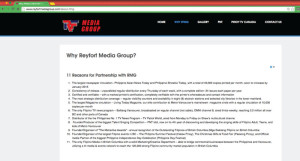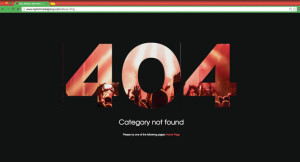(Disclaimer – We are all competing newspapers or TV shows in the British Columbia (BC) Filipino community. Rey Fortaleza of Reyfort Media and I have had numerous differences of opinion on issues and matters in the past long before we published a newspaper. (You can read it on www.driven2action.com) Bodeng Juatco, and his daughter-in-law Janice Lozano and I have had disagreements in the past that can be viewed at www.nellievandt.com and www.driven2action.com. The others are professional competitors in the industry with no previous issues.)
The issue really is basic transparency. Media as an industry is supposed to be the handmaiden of truth. They are to be factual in their claims and back up what they say when they advertise their wares. Are we doing it right in the Filipino Media and can we do better?
This is a serious issue because the cost of advertising must correspond to the number of papers in circulation and the multiplier effect of readership. This is a subject that most advertising executives are familiar with and the concept is often referred to as cost per thousand. The more the circulation, the more efficient is the advertising buck. This is the basic selling point in print media advertising.
On the other side of the coin, should advertisers be assured they are receiving the service they are paying for? Should they get their money back if they purchased advertising on false pretenses?
Even though most advertised they print a lot more than MVI, I have never seen any Filipino competitor print more than MVI each time I pick up our papers. On the distribution route, I have never seen any indication that other Filipino papers place more copies overall than MVI.
Let’s look at how the print media industry policed itself starting over 150 years ago.
In 1869, about 147 years ago, George P. Rowell, a New York advertising agent published the American Newspaper Directory with accurate lists of all the newspapers and periodicals published in both the United States and Canada. It took 45 more years to put together a system to properly audit newspapers.
That same organization 102 years later is now called Alliance for Audited Media (AAM). They audit the distribution of newspaper companies that pay for their service. They check the printer certification and then send out auditors on foot that go to the distribution list of the newspaper to see, if in fact, they are putting those newspapers out there. If they have concerns they could also demand for the paper trail of money from publisher to printer to make sure everything is correct.
The Filipino-Canadian ethnic newspaper up to now blindly works on the honor system that advertisers trust. There have been concerns brought to our attention that some advertising media didn’t appear to be printing what they say they do and others totally miss print publications without refunding money. One advertiser that advertised in a newspaper for over 10 years claimed he drove all over the lower mainland looking for the paper and it was nowhere to be found.
Most of our competitors print at the same printer. Ironically by default, I was almost doing two parts of an auditor’s job since I see what is printed and then see what is placed at each location every time I distribute MetroVan INDEPENDENT News. I will report on what I seen.
At MetroVan INDEPENDENT News (MVI), we print minimal 5,000 copies on a regular basis. We increased that to 6,000 in February 2016 with a regular amount likely to be 5,500. Even though most advertised they print a lot more than MVI, I have never seen any Filipino competitor print more than MVI each time I pick up our papers. On the distribution route, I have never seen any indication that other Filipino papers place more copies overall than MVI.
REYFORT MEDIA GROUP
The Reyfort Media Group is consistent with distribution dates from what I see. However, their site stated “The largest newspaper circulation – Philippine Asian News Today and Philippine Showbiz Today, with a total of 40,000 copies printed per month”. I have never seen Reyfort print more than MVI each time I’m at the printer. I finally took a picture of the PNT newspaper pallet at Vanstar Printers on Dec 10, 2015 after the PNT run and counted only 3,500 copies.
NOTE: It would not make any sense for anyone of us to print at another time or elsewhere at a different printer since the initial setup of the printer costs up to $1,000 each time.
This is what was advertised online at www.reyfortmediagroup.com/about-rfmg apparently for many years prior to my challenge to Rey Fortaleza on January 4/2016. Some reasons stated for partnering with Reyfort Media Group are:
- “The largest newspaper circulation- Philippine Asian News Today and Philippine Showbiz Today, with a total of 40,000 copies printed per month, soon to increase by January 2015.”
- “Certified and verifiable – with a marked printer’s certification, completely verifiable with the printer’s whereabouts and contact information.”
- “The most strategic distribution coverage – regular visibility counters and availability in eight (8) skytrain stations and selected city libraries in the lower mainland.”
I challenged Rey Fortaleza by email on January 4, 2016 to show certified print amounts but he didn’t respond. I discovered this same web page “Why Reyfort Media Group?” was removed sometime after I challenged him. Why would he now take down this information after I challenged his printing amounts?
Coincidentally, PNT’s January 14, 2016 issue added a note on the front page for the first time stating “10,000 copies printed, guaranteed 24 issues a year”.
It appears that, after I challenged Reyfort, they printed a lot more copies of PNT papers than usual. What really matters is, did PNT and its Showbiz sister publication print 10,000 each week in the last 12 months (or more if someone has faithfully advertised for years) before my challenge? I challenged publisher Rey Fortaleza by email again on January 29, 2016 to show what he has printed for the last 12 months. Again, I received no response.
*UPDATE SINCE PRINT PUBLICATION*
We have noticed that starting on January 14/2016, Reyfort Media Group is printing and putting what appears to be 4 times as many newspapers in their usual locations. There are so many PNT newspapers now, that the newspaper stands are overflowing with new and old newspapers. Reyfort newspapers are usually delivered by courier. Couriers don’t pick up, clean up and adjust the drop off amounts to insure the route drop off numbers are efficient, they just drop off new copies. The old papers are piling up with some now not being picked up as they are outdated and too many at locations that couldn’t handle these amounts.
PHILIPPINE ASIAN CHRONICLE
History shows that, the Chronicle doesn’t always print every bi-weekly issue as advertised. Philippine Asian Chronicle (PAC) doesn’t state what they print anywhere that I can find. I haven’t seen any PAC issues at all in a lot of places that I drop off. From what I see, I would be surprised if they print more than 1,500 copies.
Past advertisers reported to us allegations that PAC collects money for advertising for a year subscription but does not always fulfill all the issues they are committed to print. I challenged PAC publisher Bodeng Juatco by email to show what PAC prints for the last year. I received no response.
PHILIPPINE JOURNAL
They are consistent with distribution from what I see. They state “published twice a month, with a circulation of 10,000 copies…” I don’t know if that means they print 10,000 per issue or 10,000 a month. I challenged Irene Yatco (publisher/Philippine Journal) by email to show what they print for the last year. I received no response.
PHILIPPINE CANADIAN INQUIRER
They are consistent with distribution from what I see. However, they state they print 40,000 copies every week. I took a picture of their pallet of papers and it was about 2,550 copies including small bunches that were going to other cities in Canada. I don’t know where the other 37,000 copies come from or go to each week. I challenged PCI by email to show what they printed for the last year. I received no response.
*UPDATE SINCE PRINT PUBLICATION*
We have noticed after we challenged their printing amounts in January/2016 the Philippine Canadian Inquirer is dropping off what appears to be 4 times as many papers than I have ever seen in the past 11 months.
FILIPINO STAR MAGAZINE
They seem consistent with publications. They state “5,000 printer certified copies monthly”. I challenged Zeala Cortes (in-charge of advertising/Filipino Star magazine) to confirm certification by email for the last year. They wrote back they will show potential and past advertisers their print accreditation but not publicly.
PINOY BUZZ TV SHOW – Shaw Cable 116
Pinoy Buzz is included since they seek out advertisers in the same market. We have noted Pinoy Buzz has for the most part gone into a complete repeat mode for about a year now with mostly repeat episodes. At one time they were repeating the same three shows for months. One show was repeated 12 times with 7-month-old, outdated upcoming events. I challenged Janice Lozano by email to show evidence that their shows are “always fresh”. Lozano responded back commenting on issues we have had in the past but had no evidence or comment to prove the Pinoy Buzz tagline “always fresh” is true.
“In 100 years a lot has changed in media, except the need for transparency and trust”
– Alliance for Audited Media
I challenged all Filipino newspaper competitors to get involved in a system that would show our advertisers we are a market that can be trusted.
I asked each publisher this question: “Are you willing to allow your printer to directly send certified proof of printing amounts for the last 12 months to all present/future advertisers and interested media?”
Newspapers should be happy to reveal what they print to attract advertisers. Only one of the above Filipino papers responded to my challenge.
Advertisers have the right to ask for certification from a newspaper they advertise in to show how many they print. Some advertisers may have to go to court to really find out if whom they have advertised with is telling the truth. If a newspaper won’t give the print certification, advertisers should perhaps seek out a trusted media that will give them a good bang for their buck.













